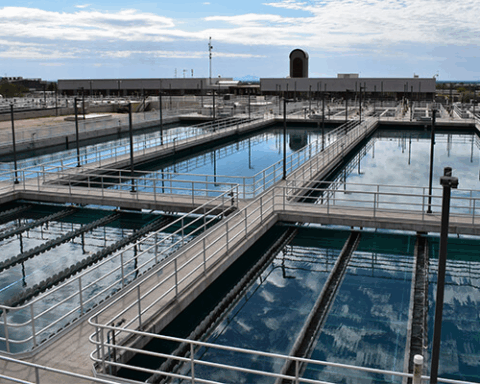The Public Utility Commission of Texas has signed off on a program that will provide up to $5 billion in low-interest loans to developers of power plants within the state’s main power grid.
The loans will be available through the Texas Energy Fund to build power plants or fund repairs to increase the overall amount of power available on the grid managed by the Electric Reliability Council of Texas (ERCOT).
The loans are limited to power plants that can ramp up electricity production on-demand regardless of weather conditions — a feature known as dispatchable. The loan requirements are designed to benefit Texas’ large natural-gas industry by incentivizing construction of natural gas power plants. Wind and solar power are not eligible for the loans. Battery storage is dispatchable, but the loan conditions explicitly disqualify battery companies from applying.
In addition, qualifying projects must be able to produce at least 100 megawatts of power, which is enough to power about 20,000 homes. In total, the Texas Energy Fund is designed to add 10,000 megawatts to the grid.
With a growing electricity demand on the ERCOT grid, Texans have become accustomed to notices to conserve power during heatwaves and winter storms. During Winter Storm Uri in 2021, amid high demand from running thousands of heaters in homes and businesses and low supply due to frozen power infrastructure, ERCOT initiated rolling blackouts to avoid a larger grid failure.
Since then, the Texas legislature has taken steps to weatherize the grid, and the Texas Energy Fund is the largest program so far to increase the power supply. Initially, the program was spearheaded as SB 2627. The bill passed, but because Texas has caps on the amount of spending the legislature can approve, the Texas Energy Fund had to be put on the ballot for voters. In November 2023, voters approved the fund, and the task of implementing the loan program fell to the Public Utility Commission of Texas.
“This is a historic step in ensuring reliable, on-demand electricity for generations of Texans,” PUC Chairman Thomas Gleeson said. “We must ensure Texans have the power they need, when they need it. This rule lays a strong foundation for the Texas Energy Fund’s success and for future investment in the state.”
The commission formally adopted the initial conditions of the loans during a meeting March 22 and announced that potential applicants can submit a notice of intent starting May 1. Potential applicants should submit their project details — including the megawatt capacity of the power plant, the target date of commercial operation and the amount of money requested — to the PUCT. The loan application will open June 1.
The final loan amount will not exceed 60% of the total cost of construction, according to the rules approved by the PUC. The loans will have a 20-year repayment period that beings three years after the power plants begin commercial operation.













